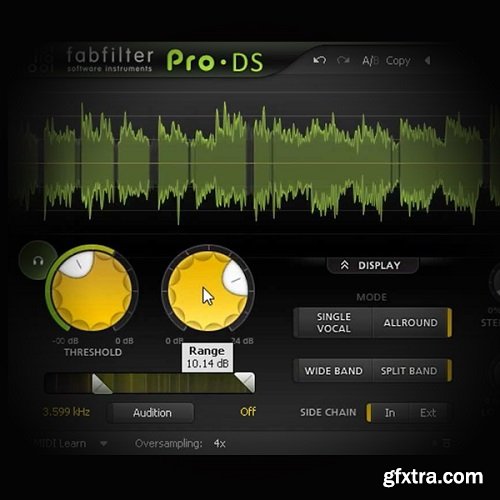
Samplecraze De-Esser What Is It And How Does It Work TUTORiAL-FANTASTiC
FANTASTiC | 26 October 2020 | 102 MB
De-esser – what is it and how does it work is a video tutorial explaining how a de-esser works and how to use it to treat sibilance in vocal recordings.
A de-esser is critical in audio production and is used to tame all manner of vocal sibilance and problematic high frequencies.
One of the biggest problems facing producers who process vocal takes is that of sibilance. Sibilance refers to the harsh consonants, notably ess and eff, that are exaggerated due to either the singer’s voice or delivery (sometimes getting too close to the microphone can exaggerate sibilance). The microphone is merciless in picking up sibilance and taming these nasties can be a nightmare if you don’t know how.
De-esser
The process of taming or controlling sibilance is called De-Essing which makes perfect sense as what we are trying to do is to de-ess, ie, remove the sss or attenuate it. Quite often the producer will manually search for sibilance and use volume automation to attenuate the sibilant frequencies. However, this can be time-consuming and quite laborious and in these instances, we prefer to use a dedicated de-esser. The de-esser is designed specifically to treat sibilance in vocal recordings.
The problem with treating sibilance is trying to locate exactly where it resides in the vocal waveform. Sibilance invariably can cover quite a wide band of frequencies and I have often treated them from 4 kHz all the way to 12 kHz. Additionally, you need to be careful not to attenuate too heavily as the process can suck the life out of the band of frequencies being processed: remember that we are attenuating a range of frequencies and not individual frequencies.
Even the best tracked vocals can exhibit sibilance.
How to use a de-esser
With a de-esser we need to first specify the range of frequencies we want to process and we are given two parameters to play with; the start of the range and the end of the range. This is referred to as the bandwidth. Once we have the range selected we need to use the threshold feature to determine at what point we want the de-esser to start to attenuate the frequencies. We then need to shape the behaviour of the de-esser by using the attack and release functions and finally we need to determine by what amount we want the frequencies attenuated; this is often referred to as reduction or range.
In this video I run a female vocal take through various de-esser plugins. I explain what a de-esser is, how it works and how to use it. I make sure to cover every feature available for a de-esser and I guide you through the proper settings to use to successfully de-ess female vocals.
Plugins used in this video:
•SSL Vocalstrip
•FabFilter Pro DS
•Toneboosters TB Sibilance
Topics covered in this video are:
•What is a de-esser
•Sibilance – What is it and How do you Control it
•Taming Plosives
•Clicks and Pops in Recordings
•Wide Band and Split Band
•Threshold
•Filters
•Range
•Side-chain
•Attack and Release
•Tips and Tricks
home page: https://bit.ly/31IFcDP
TO MAC USERS: If RAR password doesn't work, use this archive program:
RAR Expander 0.8.5 Beta 4 and extract password protected files without error.
TO WIN USERS: If RAR password doesn't work, use this archive program:
Latest Winrar and extract password protected files without error.


